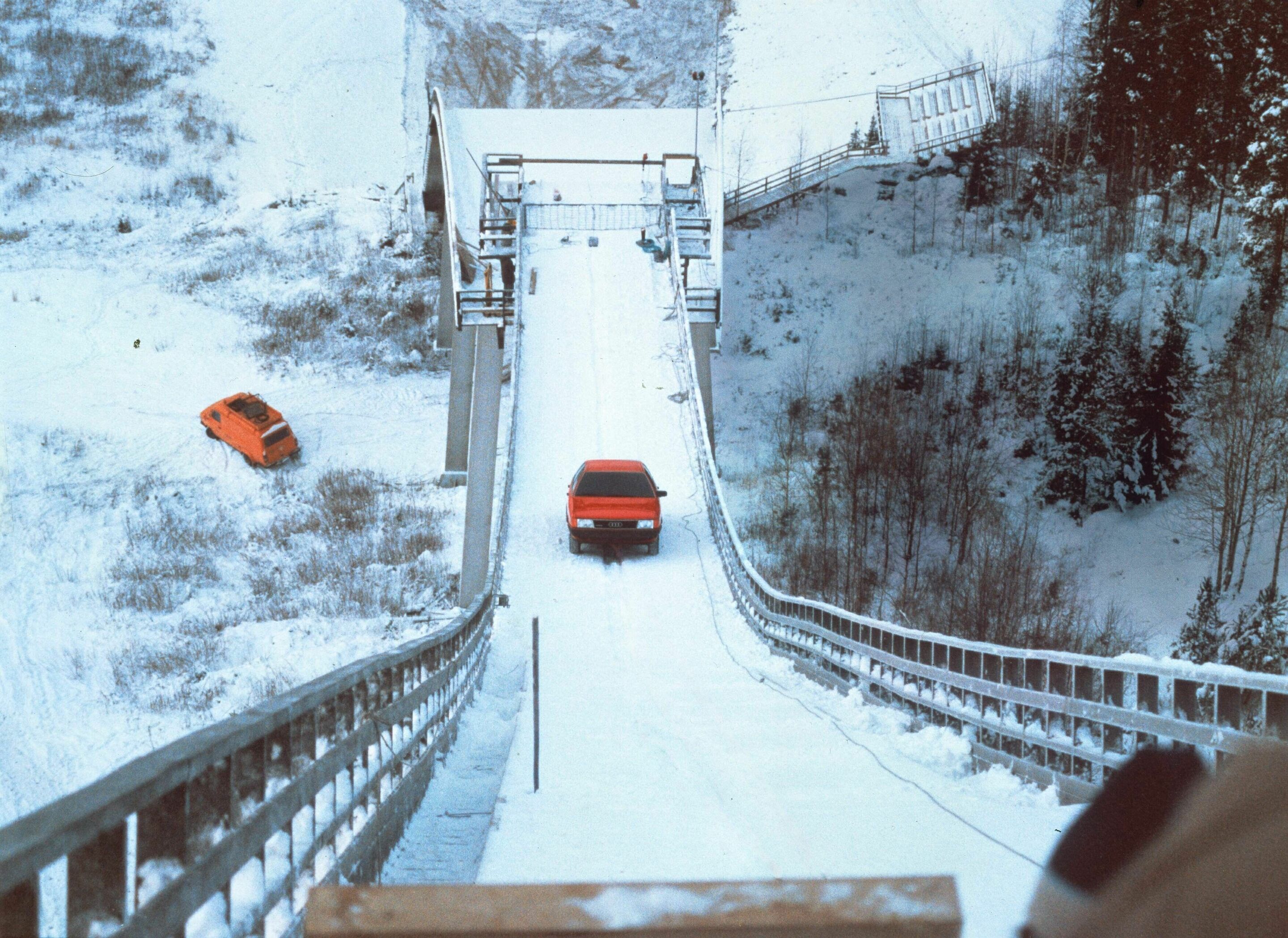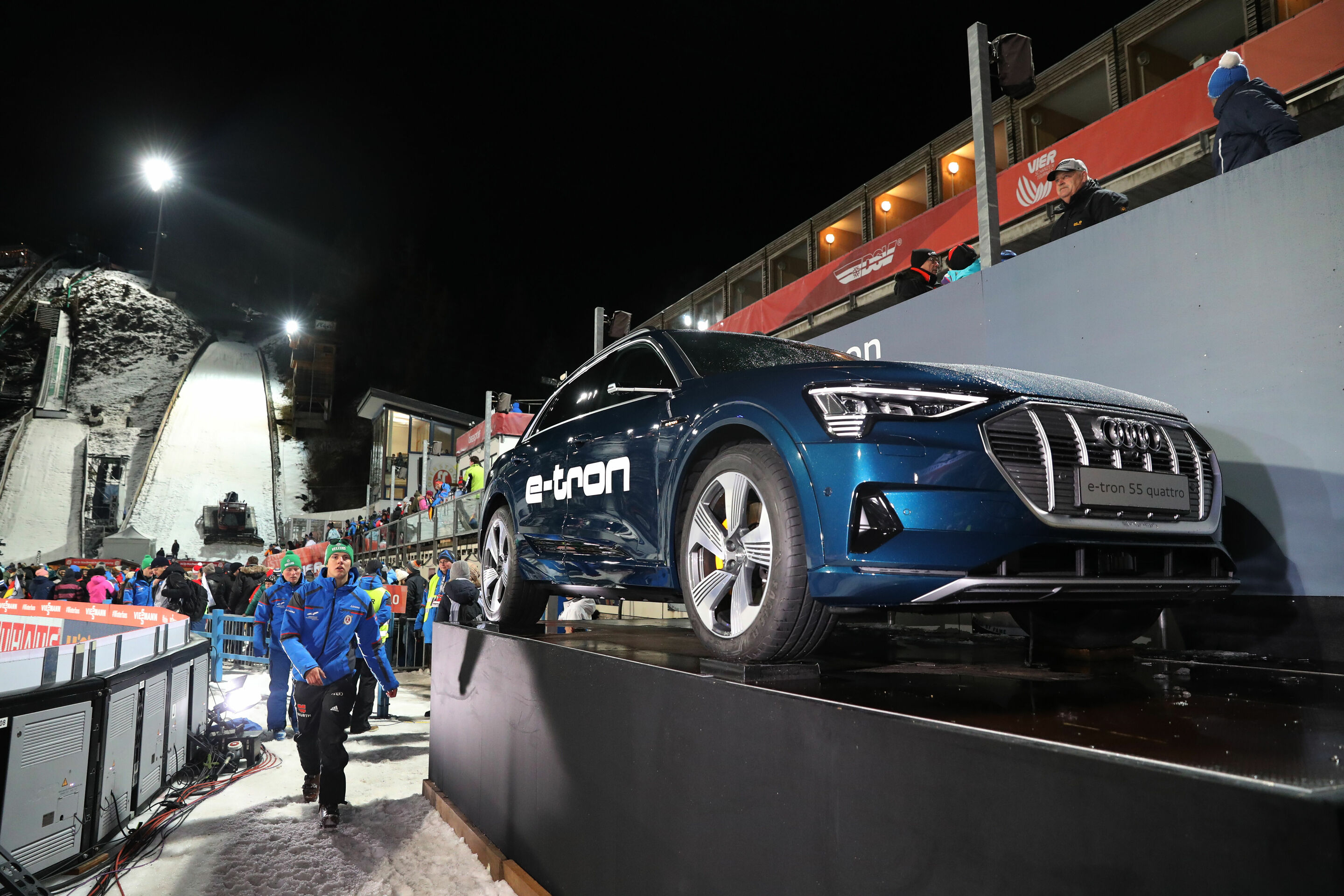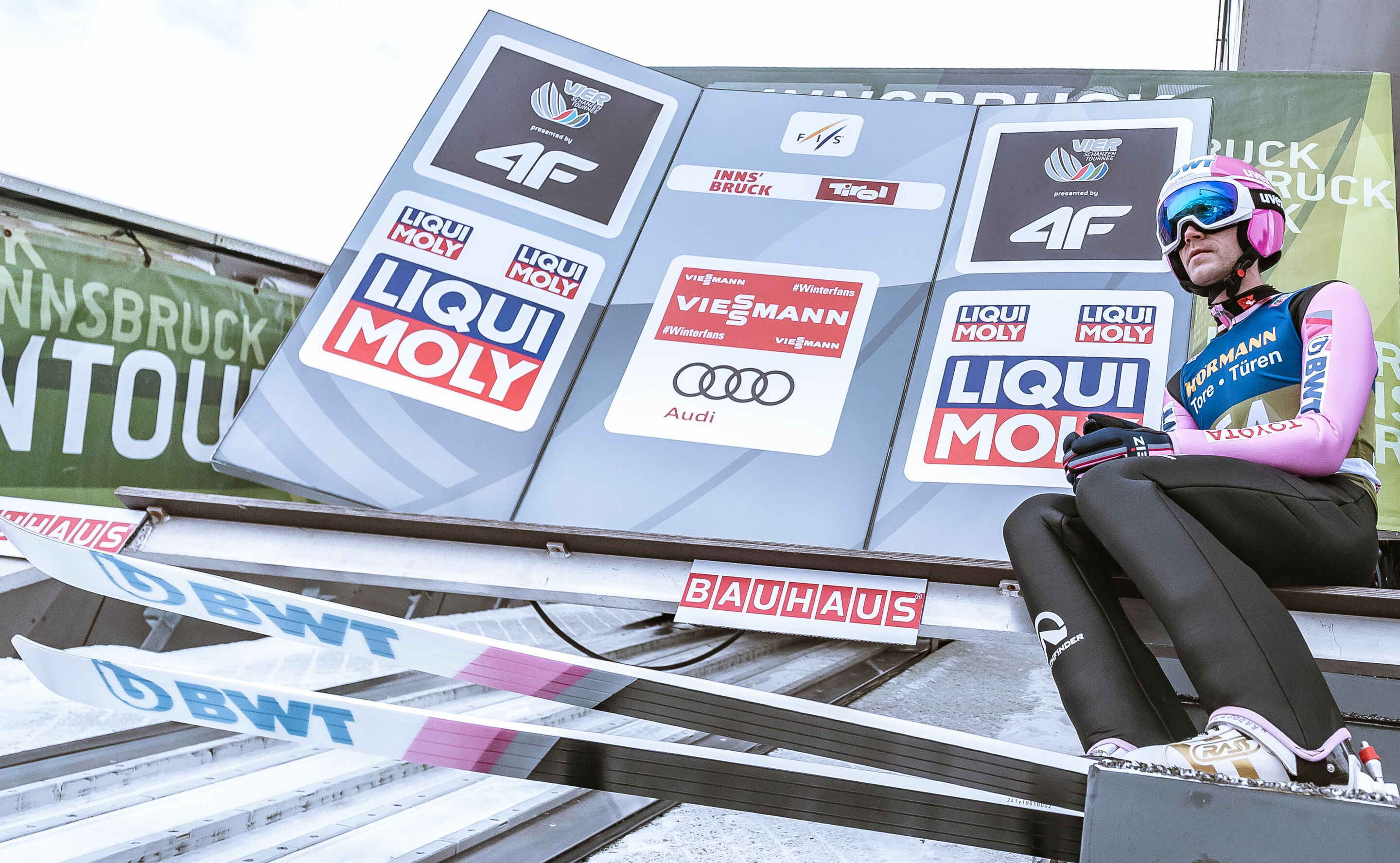Search
All search results for "ski jump"
(74)
 holoride´s cutting edge in-car entertainment platform launches for select Audi models
holoride´s cutting edge in-car entertainment platform launches for select Audi models
Leveraging holoride’s Elastic Content, players guide Dev, his scavenger robot Skyjack, and I.O.N.E. through the hostile skies of Stratus, gathering scrap and blasting A.I. sentries as they simultaneously travel to their real-world destination. In addition to bringing new thrills to passengers’ rides, holoride can also create a more comfortable experience for users. Instances of motion sickness are substantially reduced thanks to the technology’s use of steering, braking, and acceleration data to match what riders see in the headset with what they feel outside the Motorverse, and with almost no latency. holoride launches with the aptly named Pioneers’ Pack, containing everything needed to jump into this exciting new platform (minus the car), and priced at EUR 699. The package is available in Germany at shop.holoride.com starting Nov 2, 2022. The Pioneers’ Pack includes: HTC VIVE Flow: lightweight and easy to wear VR glasses that supports holoride’s entertainment service 8BitDo Pro 2 Gamepad: offers a familiar user experience in a classic controller design Safety strap: connected to the seatbelt, the strap provides safety during unexpected events while driving A one-year subscription to the holoride platform After the first year, holoride subscriptions will be available for a monthly fee (EUR 19.99 per month) or yearly upfront payment (equalling EUR 14.99 per month). Both options unlock access to an ever-growing content catalog. Cloudbreakers: Leaving Haven anchors the launch lineup of games and educational entertainment (“edutainment”). Further content will be added to the catalog in subsequent weeks and months. Additionally, the holoride browser and a powerful phone mirroring feature bring your online life to a 180-inch virtual screen. Embedded into a motion-synced environment, it allows riders to stream their favorite shows and stay connected via their social apps.
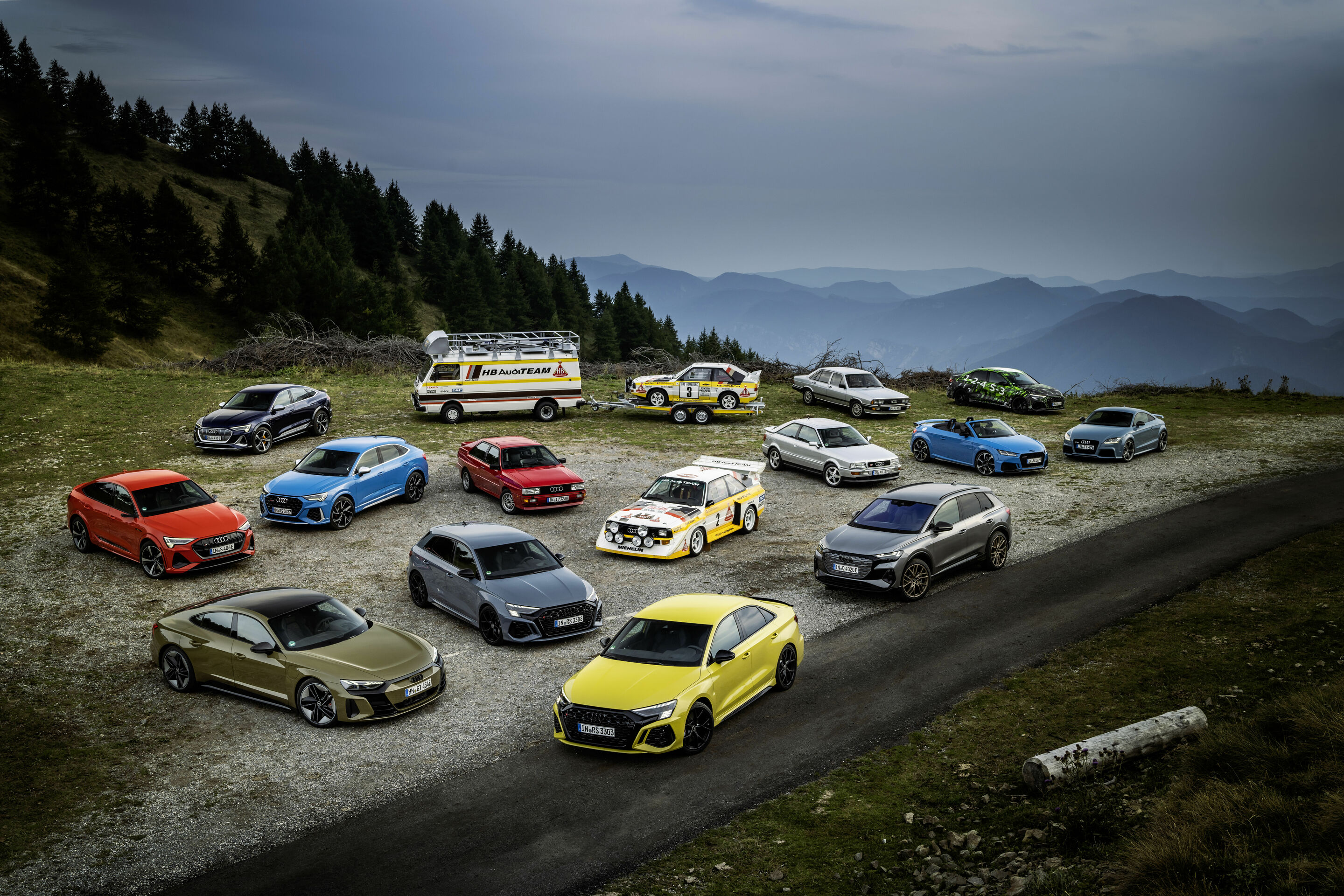 ALL FOUR LOVE
ALL FOUR LOVE
Over cars that run up ski jumps, pull trucks across snow-covered winter roads with no apparent effort, or dominate racetracks and mountain races. Every event an experience. And one thing that comes up behind the wheel: you feel something as a driver. It’s a compliment that that still works and works better, in fact, after four decades of progressive development. Remaining faithful to explorer genes to the present That now includes the step from the mechanical to the electric quattro. Anticipated and expected. Nonetheless, combining established technology with a new kind of drive is still an art. The game changer is staying faithful to your own aspirations. Bringing three engines into the car and thereby making real torque vectoring possible, for instance during sporty driving through curves, sounds like the Great 4x4 at the dawn of history: for starters, it takes courage to pack continuous all-wheel drive into a series sedan. The quattro always tells a story about itself and also about Audi. Pioneering ideas have to become pioneering action. A great love doesn’t just stop like that. There are new aspirations, lasting demands, and ambitious goals. Sometimes the mobility of the future takes a solid grip. That’s why the quattro stays true to its explorer genes. It will push all of us forward on our path safely, dynamically, and emotionally.
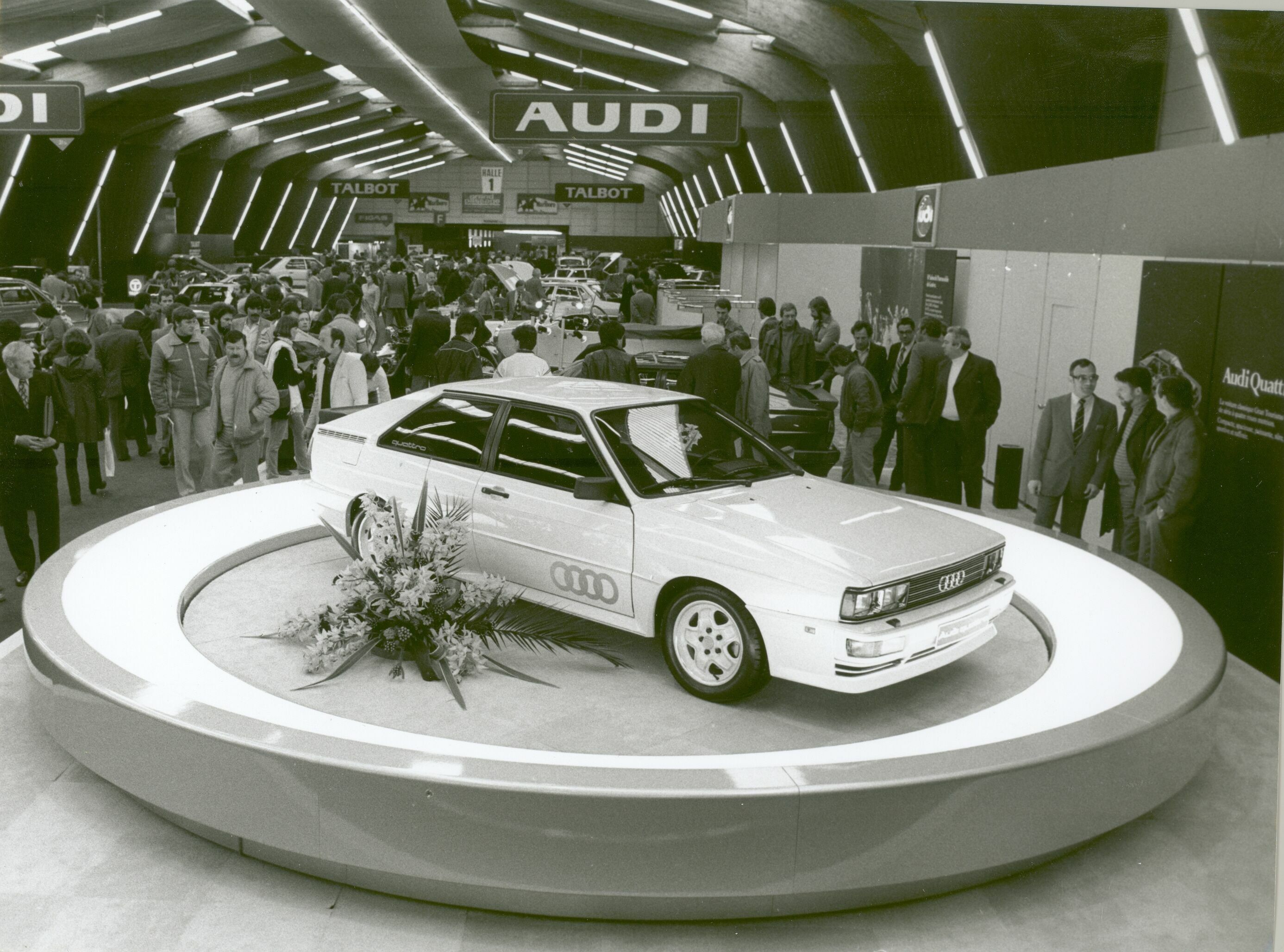 40 years, 40 figures, 40 images: fascinating facts and tales about Audi’s quattro technology
40 years, 40 figures, 40 images: fascinating facts and tales about Audi’s quattro technology
Internally, it had the designation model 85. 80 percent was the incline of the ski jump in Kaipola, Finland, where Audi filmed a legendary commercial in 1986. Professional rally driver Harald Demuth mastered the snow-covered 47-meter (154.2-ft) ascent in the Audi 100 CS quattro. 92.2 percent of all cars that Audi delivered to customers in Canada in 2019 had a quattro drive. As a result, Canada has the highest proportion of all-wheel drive cars in the world. From 140 kW (190 PS) in the Q2 40 TFSI quattro S tronic right through to 456 kW (620 PS) in the R8 V10 performance quattro supercar, Audi provides its customers with the benefits of permanent all-wheel drive throughout the entire model range. 200 PS (147 kW) is what the original quattro had at its disposal – 40 years ago, that was a value truly worthy of a sports car. At this point, the Porsche 911 SC produced just 4 PS more. Around 720 PS (530 kW) is what the five-cylinder-turbo in the Audi 90 quattro produced, which competed in the IMSA GTO series in 1989 – the 2.2-liter four-valve powerplant summoned no less than 329 PS from every liter (0.04 cu ft) of displacement.
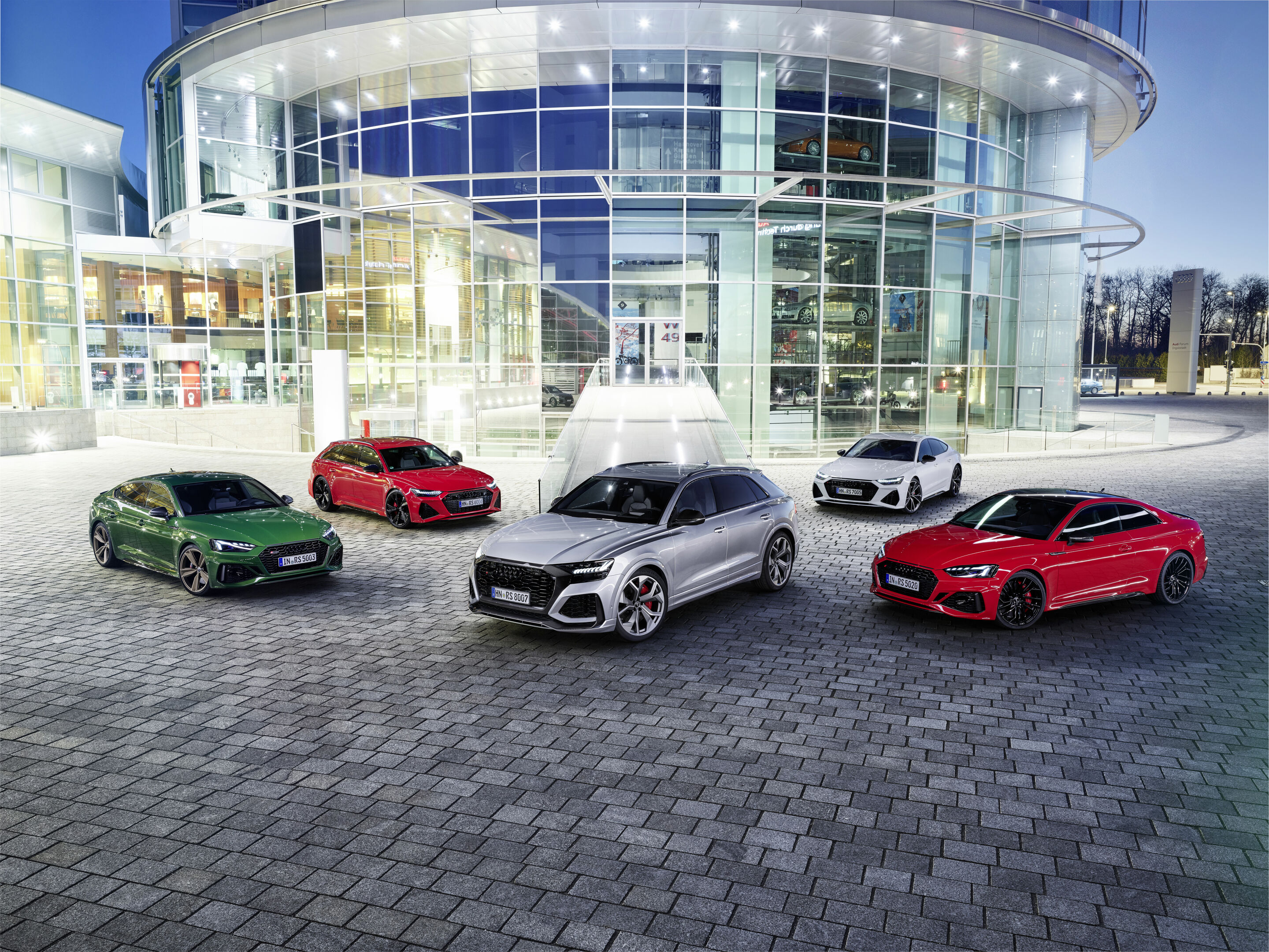
In 1986, professional rally driver Harald Demuth drove an Audi 100 CS quattro up the Kaipola ski jump in Finland. In 2005, Audi repeated this event with an S6 on the same ski jump, which was restored specially. Circuit and rallycross champion Mattias Ekström (Sweden) performed a similar feat in 2019: He tackled the steepest uphill section of the infamous Streif ski course at Kitzbühel in a technology demonstrator and predecessor to the Audi e-tron S* with three electric motors, negotiating gradients of as much as 85%. All terms marked in the text are explained in detail in the technology lexicon at www.audi-mediacenter.com/en/technology-lexicon.
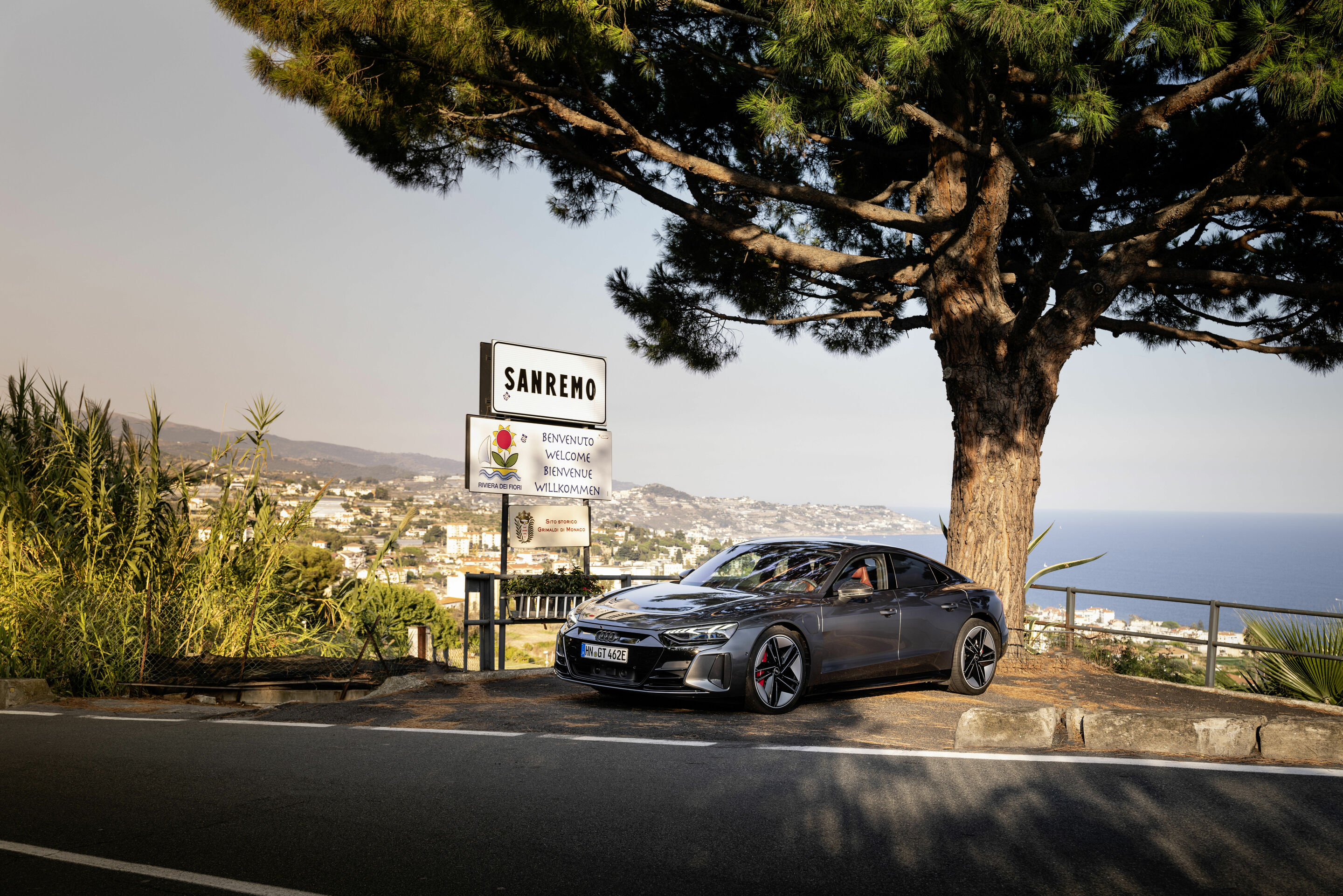
Numerous renowned commercials and campaigns such as the Audi 100 CS quattro climbing a ski jump with professional rally driver Harald Demuth at the wheel have also contributed to its legendary status. With the electric quattro in the e-tron models, Audi is setting the next benchmark in the age of e-mobility. Where and how is the quattro used today? With the exception of the A1 series, the quattro is available as a purely mechanical all-wheel-drive system in every model series. The new Audi RS 3 is the first Audi ever to feature the quattro with the RS torque splitter, which distributes drive torque between the rear wheels in a fully variable manner. The e-tron and e-tron Sportback ushered in the era of the electric all-wheel drive in 2018. In the Audi e-tron models, one electric motor powers the front and one the rear axle. The e-tron series’ S models represent a particular technical highlight – this is the first time that three electric motors have been used in a mass-produced model, two of them on the rear axle. In the S models, electric torque vectoring, i.e., targeted torque distribution without a mechanical connection such as a differential between the two rear wheels, gives the quattro drive system even greater agility and traction. What makes the quattro drive system so unique? Audi offers a wide variety of automotive concepts across its model range – and as a result, its quattro technology also covers a broad spectrum.
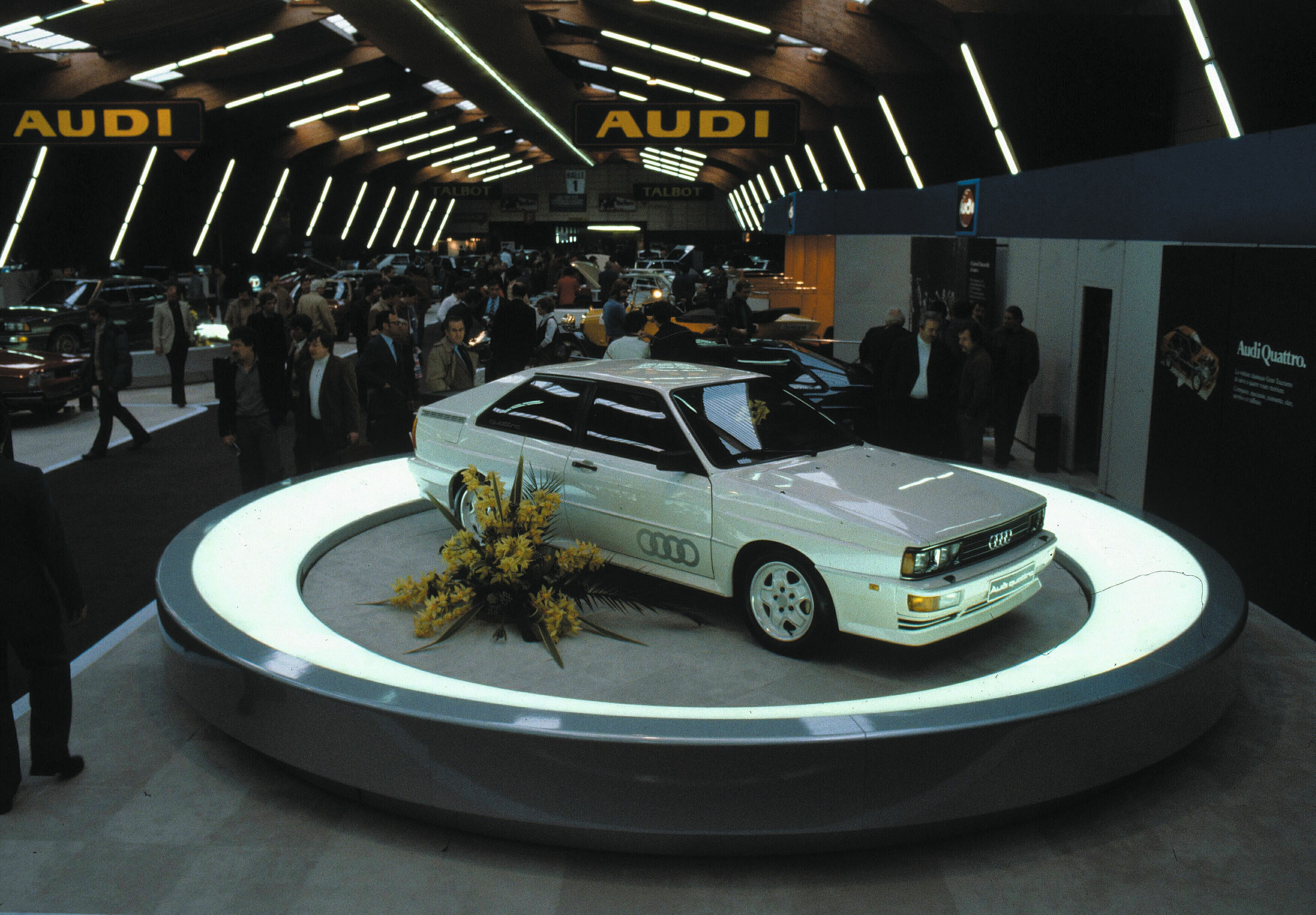 Over 40 years of quattro – over 40 years of Vorsprung durch Technik
Over 40 years of quattro – over 40 years of Vorsprung durch Technik
One unforgettable moment is the clip from 1986 filmed at the Kaipola ski jump in Finland, featuring the red Audi 100 CS quattro with professional rally driver Harald Demuth at the wheel scaling the 37.5-degree incline under its own power. In 2005, Audi repeated this feat on the same ski jump, which was restored specially for the event, with an S6. Circuit and rallycross champion Mattias Ekström (Sweden) performed a similar feat in 2019. He tackled the steepest section of the Streif ski course at Kitzbühel in an Audi e-tron quattro* with three electric motors, negotiating gradients of as much as 85%. Audi has fueled the appeal of quattro again and again over 40 years with a succession of spectacular concept cars. The quattro Spyder, presented at the 1991 International Motor Show (IAA) in Frankfurt am Main, Germany, was the brand’s first thoroughbred sports car of the post-war era and its first aluminum-bodied car. Just a few weeks later, Audi presented the Avus quattro at the Tokyo Motor Show. It was designed to feature a W12 engine producing 374 kW (509 PS) mounted longitudinally ahead of the rear axle, the manual transmission in the quattro drivetrain positioned between the front wheels. The Audi TT quattro Coupé and Roadster concepts presented in fall 1995 indicated the way to series production. Three more concept cars marked the expansion of the model range in 2003. At the Detroit Motor Show in January, Audi presented its Pikes Peak quattro, the predecessor to the Q7. This was followed at the Geneva Motor Show by the Nuvolari quattro two-door coupé, which paved the way for the A5. Then, in September, the Audi Le Mans quattro was the star of the IAA in Frankfurt – and also the spitting image of what would later become the R8. The Audi R8 e-tron concept, one of the stars of the IAA in 2009, was a sports car with electric-only drives at all four wheels.
 The track record
The track record
One unforgettable moment is the clip from 1986 filmed at the Kaipola ski jump in Finland, featuring the red Audi 100 CS quattro with professional rally driver Harald Demuth at the wheel scaling the 37.5-degree incline under its own power. In 2005, Audi repeated this feat on the same ski jump, which was restored specially for the event, with an S6. Circuit and rallycross champion Mattias Ekström (Sweden) performed a similar feat in 2019. He tackled the steepest section of the Streif ski course at Kitzbühel in an Audi e-tron Quattro with three electric motors, negotiating gradients of as much as 85%. Audi has fueled the appeal of quattro again and again over 40 years with a succession of spectacular concept cars. The quattro Spyder, presented at the 1991 International Motor Show (IAA) in Frankfurt am Main, Germany, was the brand’s first thoroughbred sports car of the post-war era and its first aluminum-bodied car. Just a few weeks later, Audi presented the Avus quattro at the Tokyo Motor Show. It was designed to feature a W12 engine producing 374 kW (509 PS) mounted longitudinally ahead of the rear axle, the manual transmission in the quattro drivetrain positioned between the front wheels. The Audi TT quattro Coupé and Roadster concepts presented in fall 1995 indicated the way to series production. Three more concept cars marked the expansion of the model range in 2003. At the Detroit Motor Show in January, Audi presented its Pikes Peak quattro, the predecessor to the Q7. This was followed at the Geneva Motor Show by the Nuvolari quattro two-door coupé, which paved the way for the A5. Then, in September, the Audi Le Mans quattro was the star of the IAA in Frankfurt – and also the spitting image of what would later become the R8. The Audi R8 e-tron concept, one of the stars of the IAA in 2009, was a sports car with electric-only drives at all four wheels.

In 1986, professional rally driver Harald Demuth drove an Audi 100 CS quattro up the Kaipola ski jump in Finland. In 2005, Audi repeated this event with an S6 on the same ski jump, which was restored specially. Circuit and rallycross champion Mattias Ekström (Sweden) performed a similar feat in 2019: He tackled the steepest uphill section of the infamous Streif ski course at Kitzbühel in a technology demonstrator and predecessor to the Audi e-tron quattro with three electric motors, negotiating gradients of as much as 85%. 40 years of quattro: the track record and the model range “quattro” means “Audi,” and “Audi” often means “quattro”: The principle of four-wheel drive is a cornerstone of the brand and has been for 40 years. Since the original quattro made its debut at the Geneva Motor Show in 1980, Audi has produced almost eleven million cars with quattro drive systems while always advancing all-wheel drive technology. The latest state of development is the electric quattro with electric torque vectoring. All terms marked in the text are explained in detail in the technology lexicon at www.audi-mediacenter.com/en/technology-lexicon.


